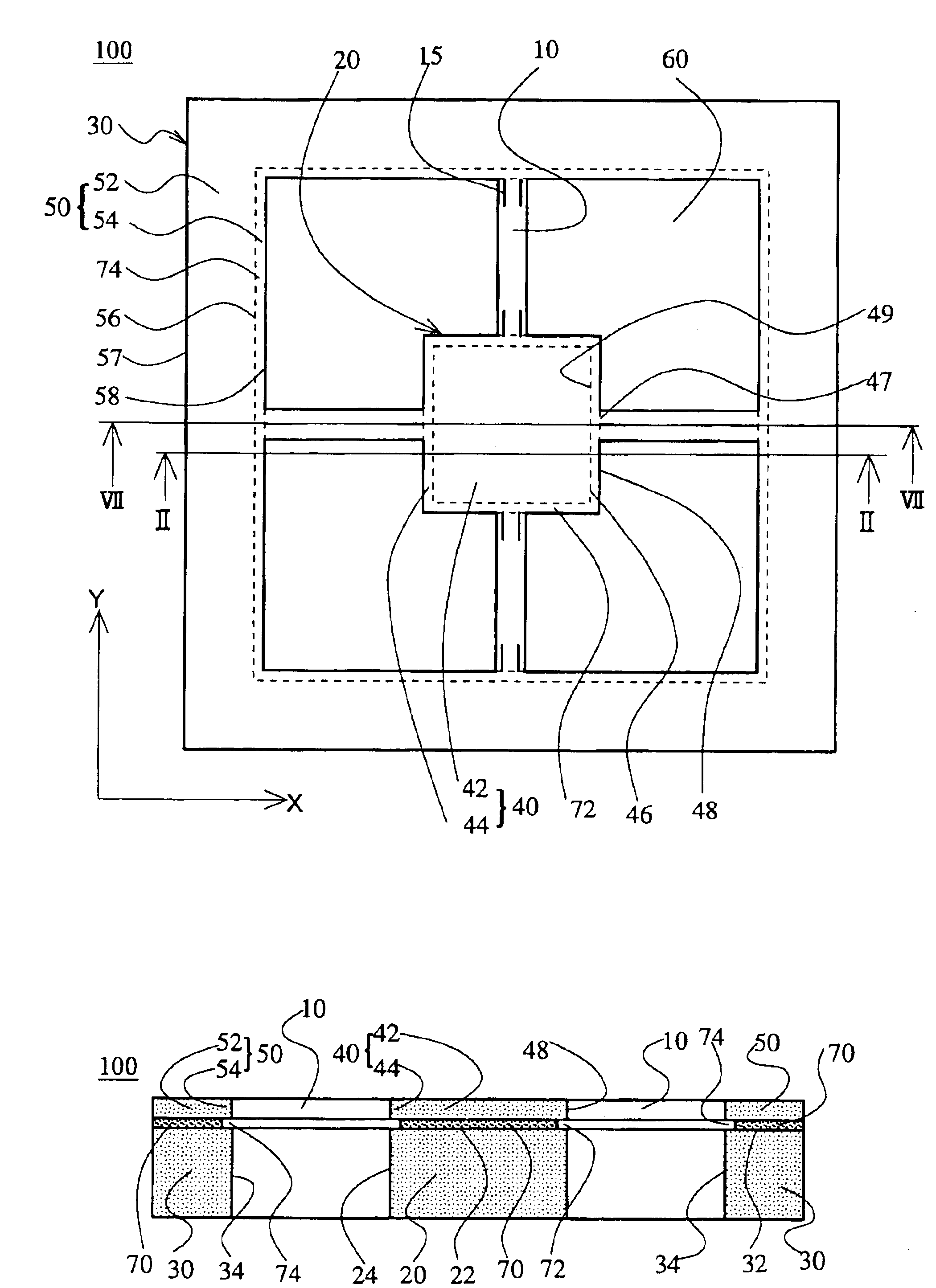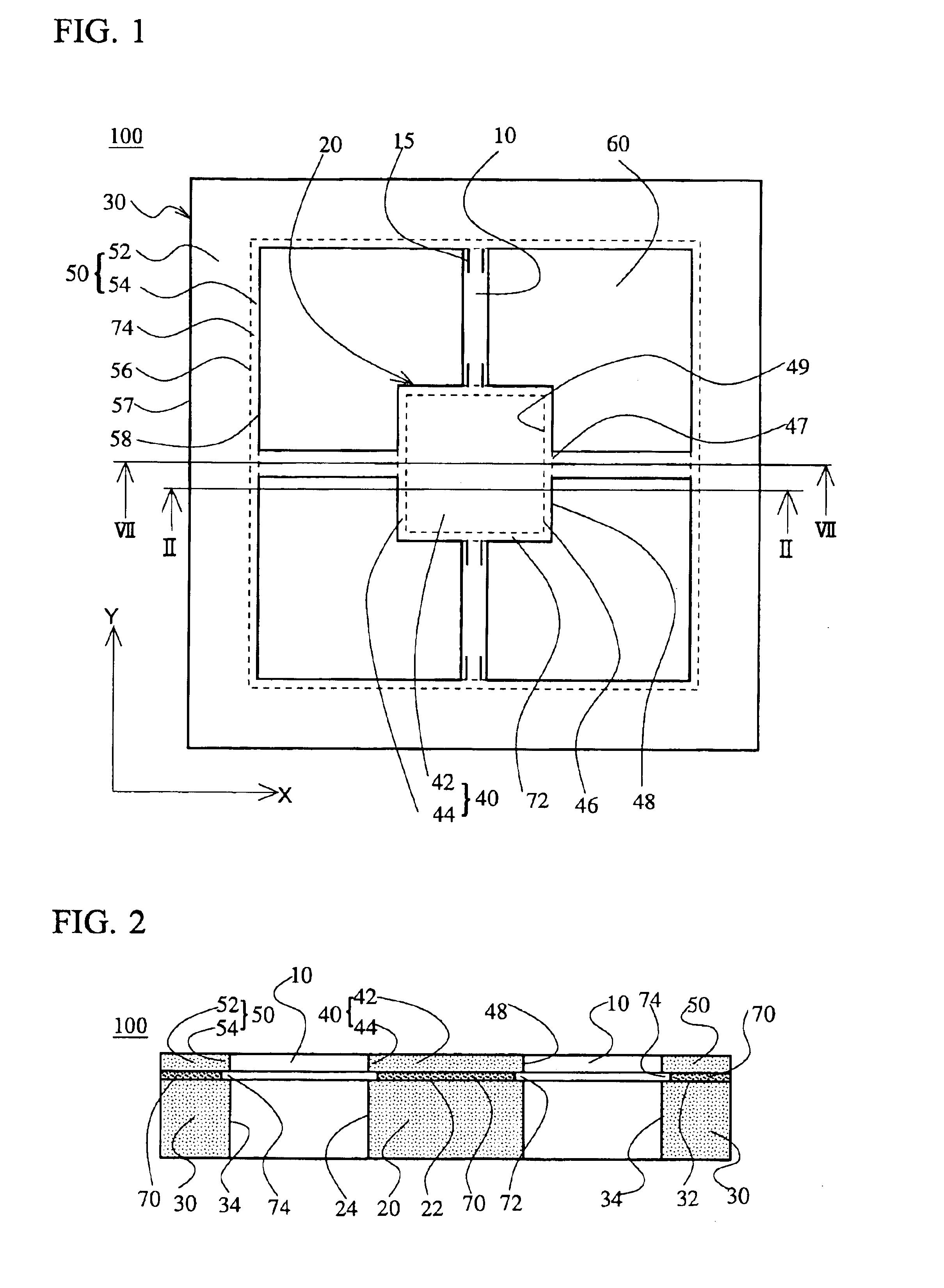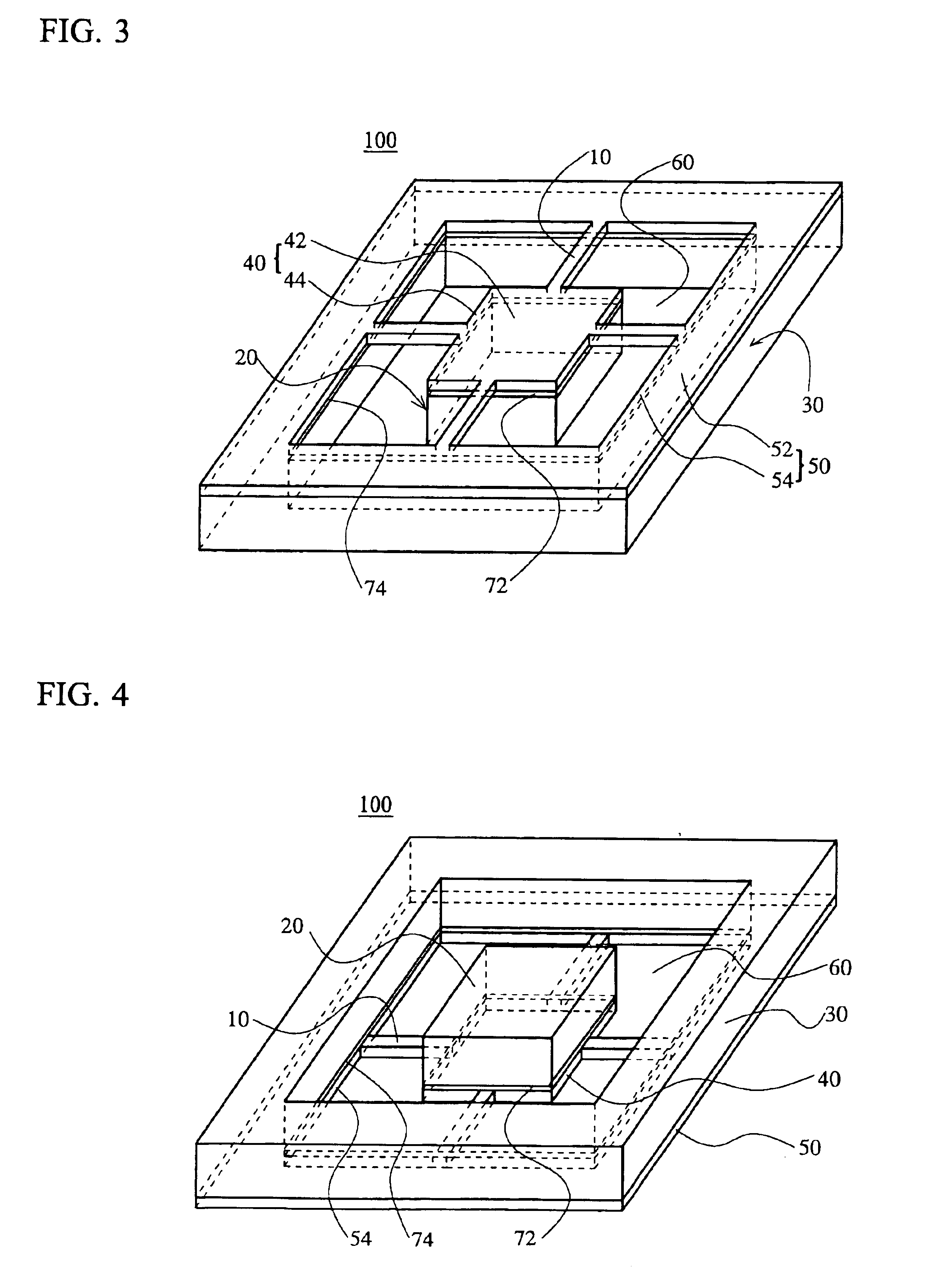Acceleration sensor
a sensor and acceleration technology, applied in the field of acceleration sensors, can solve the problems of excessive amplitude of the mass portion, breakage of the elastic support arms, and elastic support arms may be broken when subjected to such a large impact, and achieve the effect of improving the sensitivity to acceleration
- Summary
- Abstract
- Description
- Claims
- Application Information
AI Technical Summary
Benefits of technology
Problems solved by technology
Method used
Image
Examples
example 1
[0063]The first embodiment of the invention will be explained, referring to FIGS. 1 through 6. FIG. 1 is a plan view of a semiconductor acceleration sensor element 100 of the first embodiment, FIG. 2 is a cross sectional view taken along the line II—II of FIG. 1, FIG. 3 is a perspective view of the acceleration sensor element shown in FIG. 1, FIG. 4 is an upended perspective view of the acceleration sensor element of FIG. 3, FIG. 5 is an enlarged perspective view of part of FIG. 3, and FIG. 6 is an enlarged cross sectional plan view taken along the line VI—VI of FIG. 5.
[0064]The acceleration sensor element 100 for the present invention uses a silicon single crystal substrate with an SOI layer being formed via a SiO2 insulation layer, namely, an SOI wafer, in order to make it possible to control the thickness of elastic support arms with high precision. The SOI is an abbreviation of Silicon On Insulator. In this example, a wafer formed by thinly forming the SiO2 insulation layer bein...
example 2
[0086]Referring to FIGS. 8 through 12, an acceleration sensor element of the second embodiment according to the invention will be explained below. FIG. 8 is a plan view of the acceleration sensor element of the second embodiment, FIG. 9 is a cross sectional view taken along the line IX—IX of FIG. 9, FIG. 10 is an enlarged explanatory perspective view of part of the acceleration sensor element, FIG. 11 is an enlarged cross sectional plan view taken along the line XI—XI of FIG. 10 and FIG. 12 is an exploded perspective view of the acceleration sensor element of the second embodiment. In these drawings and the description below about the acceleration sensor element of the second embodiment, like reference numerals are used to refer to like parts.
[0087]Although the acceleration sensor element 200 of the second embodiment is almost the same as the acceleration sensor element 100 of the first embodiment, the sensor element 200 does not have an SiO2 insulating layers the first embodiment h...
example 3
[0091]Referring to FIG. 13, an acceleration sensor 300 of the third embodiment assembled with the semiconductor acceleration sensor element 100 of the first embodiment will be explained. FIG. 13 is a cross sectional view of the acceleration sensor.
[0092]In the cross sectional view shown in FIG. 13, a first regulation plate 310 made of borosilicate glass of 0.3 mm thick is fixed with paste 320 on each corner of the top surface of the thick support frame top plate 50 to cover the acceleration sensor element 100 explained in the first embodiment. The paste is silicon-rubber resin adhesive, such as DA 6501 from Dow Corning Toray Silicone Co., Ltd., mixed with about 10 mass % of hard plastic balls made of divinylbenzene-based cross-linked copolymer having diameters of approximately 10 μm. The silicon-rubber resin adhesive is elastic enough to absorb the applied impact and shows Young's Modulus less than 8.8×10−4 G Pa after hardened. The area of the paste 320 at each of the corners of the...
PUM
 Login to View More
Login to View More Abstract
Description
Claims
Application Information
 Login to View More
Login to View More - R&D
- Intellectual Property
- Life Sciences
- Materials
- Tech Scout
- Unparalleled Data Quality
- Higher Quality Content
- 60% Fewer Hallucinations
Browse by: Latest US Patents, China's latest patents, Technical Efficacy Thesaurus, Application Domain, Technology Topic, Popular Technical Reports.
© 2025 PatSnap. All rights reserved.Legal|Privacy policy|Modern Slavery Act Transparency Statement|Sitemap|About US| Contact US: help@patsnap.com



